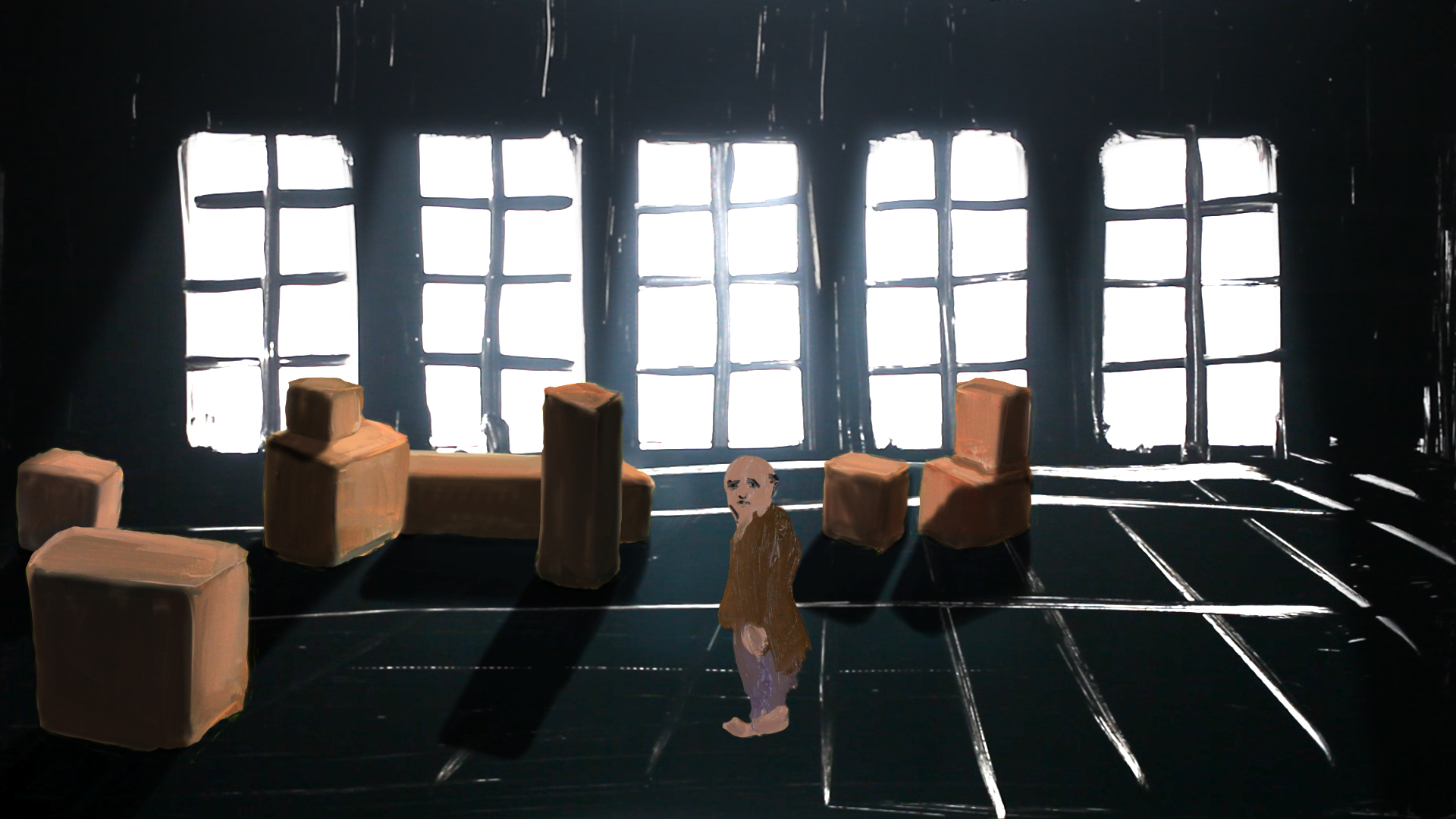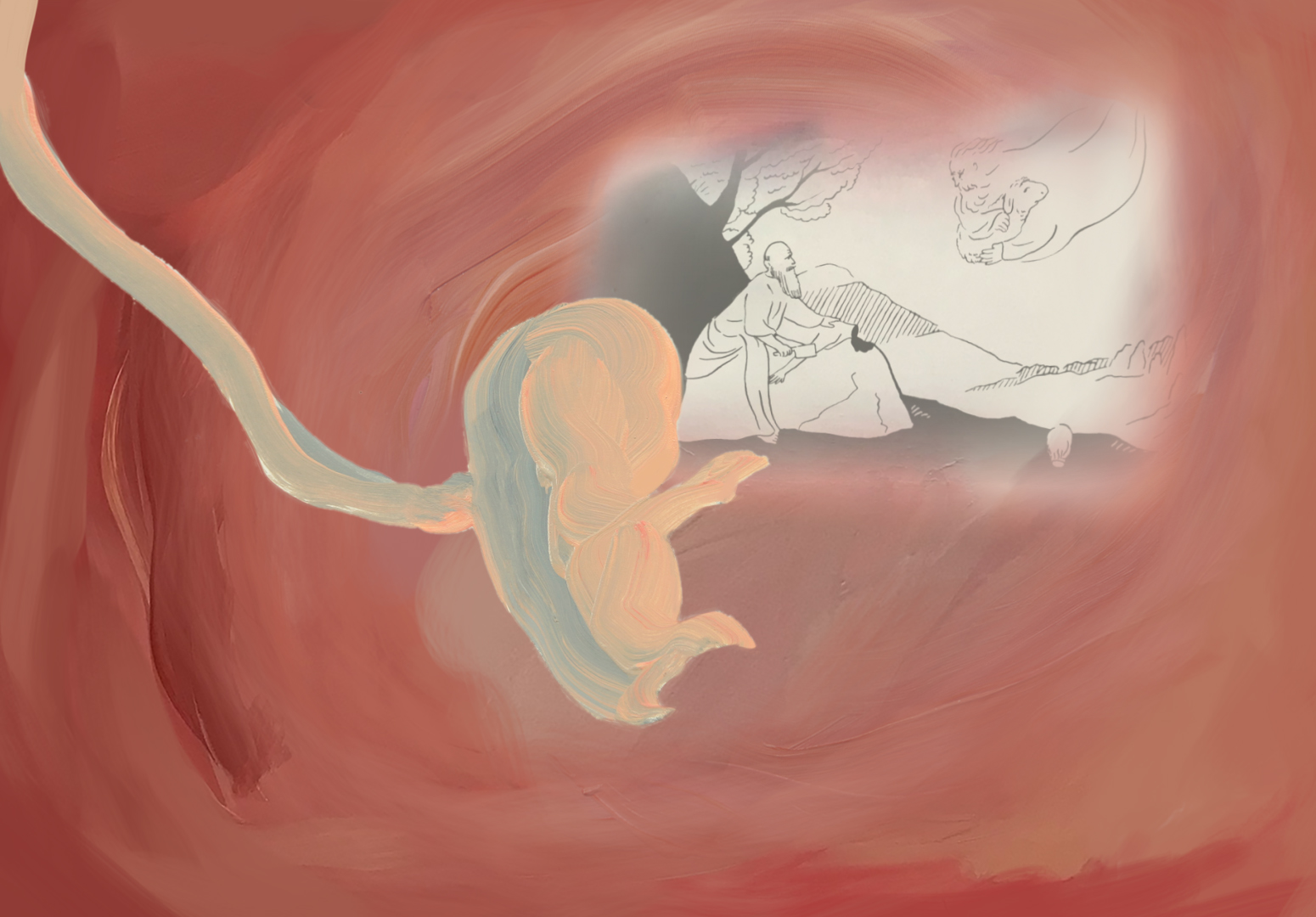
On the 52nd floor of the towering Roppongi Hills complex in Tokyo, a family chuckled besides me. We were watching a succession of videos by Tala Madani, which were presented alongside a suite of her paintings as the newest chapter of the Mori Art Museum’s “MAM Projects” series—the institution’s platform for experimental projects by artists around the world. The ten animations, created between 2007 and 2019, uncover the Tehran-born, Los Angeles-based artist’s ongoing investigation of patriarchal power. Often featuring crudely rendered men who appear impish and witless, her work has been known for ridiculing society’s cyclical perpetuation of dominance and submission. Madani’s characters wound and deride one another in violent ways that carry an air of the slapstick comedy prevalent in children’s cartoons. Laughter softly filled the Mori Art Museum’s room, but unease emanated from the unfolding scenes.
Organized chronologically, these videos show the subtle evolution of Madani’s signature style. Although her earlier works are equally resonant, the artist’s technique of stop motion animation becomes distinguishably more refined with time, as she experiments with sound and occasional real-life footage. Three of the most recent animations—Mr. Time (2018), Manual Man (2019), and The Womb (2019)—were also shown at Madani's recent exhibition at Los Angeles's David Kordansky Gallery, which ended just one month before they debuted in Japan. These animations point to the tyranny of sociopolitical constructs, while questioning whether new generations have the potential to avoid their seemingly inescapable fates.
In Mr. Time, a generic, bespectacled man circles up and down escalators in a nondescript lobby, which in itself symbolizes the uniform settings that house corporate and governmental power throughout the world. Set rhythmically to a ticking clock, his mechanical movements are soon disrupted by a mob that appears on the landing above the escalators. The group shoves him down repeatedly without any provocation, applauding their own cruelty until the man is reduced to various dismembered, bloodied parts. As frenzy dispels the mob, the man's body parts continue ascending and descending the escalators, as though transfixed by a curse. In this way, Madani appears to make a mockery of capitalist aspirations, turning notions of upward mobility or workplace productivity into a violent spectacle.

Manual Man and The Womb, on the other hand, give us partial cause for hope. The former follows a progression of men whose bodies transform into furniture and appliances after reading various instruction manuals. Towards the end of the video, a naked baby enters the room, peers through the window at a blinding light—an overt metaphor for unfiltered truth—and proceeds to smash his surrounding furnishings to bits. In the latter work, a fetus grows as condensed scenes extracted from the history of human civilization are projected onto his mother’s womb, as though it were a cinema for one. These scenes include Jesus’s crucifixion, the Industrial Revolution and nuclear warfare, interspersed with vignettes of cultural advancement. The fetus tries to turn off the screen with a television remote, but scenes continue to flash before its eyes. Exasperated by the macabre imagery, it finally pulls out a gun and punctures the womb until the same blinding light pierces through.
While the critique of patriarchal structures may not be new to Madani’s practice, her recent contemplations, which look to articulate the depth of its grip, feel revelatory. The recurring symbol of the naked baby, which also features prominently in the artist’s paintings, stands not only as the counterpoint to an adult world replete with systemic hierarchies of authority, but as a figure that is just as prone to aggression as those who presumably nurture him. Grim as this may be, there is power in these infants' yearnings for the destruction of the various structures in this world that reduce men into cogs in an unyielding system. Just as we see repeatedly with violent demonstrations against hegemonic powers around the globe, the naked baby uses resolute force to usher in a purity that perhaps only exists in Madani’s imagined world.




